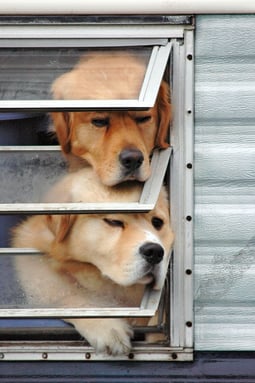How many of us have come home to find that our beloved dog has destroyed the sofa cushions or worse, chewed up your favorite pair of shoes. This may be due to a problem called separation anxiety. Separation anxiety (SA) is actually one of the most common behavioral problems seen in dogs. Not only can SA manifest as destructive chewing behavior but dogs with SA may bark, howl, dig, or urinate and defecate in the house when left alone. There is not one specific thing that causes dogs to develop this disorder but some common triggers include: a change in guardian, schedule changes, moving to a new house, or the sudden absence of a family member.

The first thing to do if you feel that your dog is experiencing episodes of separation anxiety is to take them to your family veterinarian for a check-up. It is important to make sure there are no medical reasons for the problem. For example, dogs may urinate in the house if there is a urinary tract infection or develop a hormone-responsive form of incontinence that can be treated with medication.
It is also important to make sure that your dog has safe toys to play with and chew while you are away. This is particularly important for puppies. Dogs need stimulation just like we do and, if they get bored, may find destructive ways to pass the time while you aren’t home. The ASPCA has a great web page on ways to enrich your dogs environment and stimulate play. Exercise is also an important part of making sure your dog is healthy and stimulated. Enrolling in a reward-based training class may help as well.
Another thing to try is counterconditioning. This means helping your dog learn to associate you leaving the house with something good like food or play. Food puzzles (like a KONG® toy stuffed with something tasty) are a good thing to try here. Leaving some low, soothing music on in the house may be helpful as well. You can also try to leave for just a short while and then slowly increase the length of time you are away so your dog has time to get accustomed to you leaving. You may need to do this slowly, over a few days to weeks. Be sure that whenever you leave the house, you make it as low-key and uneventful as possible. Don’t make your exits frantic or stressful or your dog will pick up on that as well. Experts recommend keeping things low-key when you get home too and ignoring your dog until they are calm and relaxed.
Crate training can be considered in some cases but really depends on the dog. If your dog pants a lot and seems anxious or frantic when he/she is in a crate, then this may not be a good option.
Finally, if nothing seems to be working, you may need to consult or visit with a veterinary behaviorist. Be sure to talk to your family veterinarian who can help connect you with professionals in the area.




